I know this is an old post but might help someone in the future.
Disclaimer: My solution is a workaround that's a little clunky and not sexy, but it works. I tried to find a proper solution by even going into the Vista themes' .tcl file but apparently, the style of the widgets themselves is given through the Microsoft Visual Styles API. I tried playing around with it but it seems that fixing the issue in the themes' code could be deeper than my current understanding of the tcl language.
Workaround I found:
Instead of setting the master of the Scale to be optionsframe , create another frame to contain the Scale and a variable to store the height of the frame (this will come in handy later):
scale_frame_height = 30
scale_frame = ttk.Frame(master=optionsframe, height=scale_frame_height)
scale_frame.grid(row=0, column=7)
Pack the scale into the container frame:
width = Scale(scale_frame, from_ = 1, to = 20, style = 'SCALEBG.Horizontal.TScale')
width.pack()
Now the "cheat" is to create another frame with the same height as the scale_frame and a width of 2 pixels and place it into the scale_frame container:
hide_pixel_frame = ttk.Frame(master=scale_frame, height=scale_frame_height, width=2)
hide_pixel_frame.place(relx=1, rely=0, anchor="ne")
The hide_pixel_frame will be laid over the excess pixels and always stick to the right:

Now create a style for the hide_pixel_frame to give it the same background color as the window and add the style to the frame:
hide_pixel_bg = ttk.Style()
hide_pixel_bg.configure('HIDE.TFrame', foreground = '#2a2a2a', background = '#2a2a2a')
hide_pixel_frame = ttk.Frame(master=scale_frame, height=scale_frame_height, width=2, style='HIDE.TFrame')
hide_pixel_frame.place(relx=1, rely=0, anchor="ne")
The final example code would look like this:
import tkinter as tk
from tkinter import ttk
from tkinter.ttk import Scale
root = tk.Tk()
style = ttk.Style(root)
style.theme_use("vista")
root.configure(bg='#2a2a2a')
scalebg = ttk.Style()
scalebg.configure('SCALEBG.Horizontal.TScale', foreground = '#2a2a2a', background = '#2a2a2a')
optionsframe = ttk.Frame(master=root, width=300, height=50)
optionsframe.pack_propagate()
optionsframe.pack(pady=30)
scale_frame_height = 30
scale_frame = ttk.Frame(master=optionsframe, height=scale_frame_height)
scale_frame.grid(row=0, column=7)
width = Scale(scale_frame, from_ = 1, to = 20, style = 'SCALEBG.Horizontal.TScale')
width.pack()
hide_pixel_bg = ttk.Style()
hide_pixel_bg.configure('HIDE.TFrame', foreground = '#2a2a2a', background = '#2a2a2a')
hide_pixel_frame = ttk.Frame(master=scale_frame, height=scale_frame_height, width=2, style='HIDE.TFrame')
hide_pixel_frame.place(relx=1, rely=0, anchor="ne")
root.mainloop()
The end result: 
Again, this is quite a crude workaround but it's better than nothing and it gets rid of the pesky pixels.
 at the end there is an extra bit, which would annoy some people if they notice it(you would kinda be able to spot it). I had it print out what number the scale was and it was at the max it could be. Here is the code of the scale
at the end there is an extra bit, which would annoy some people if they notice it(you would kinda be able to spot it). I had it print out what number the scale was and it was at the max it could be. Here is the code of the scale

